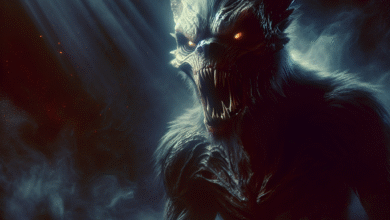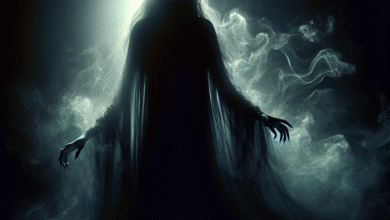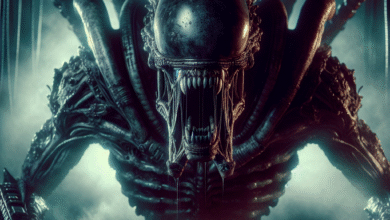The Enigmatic Lamia: A Study of the Seductive Soul-Eater
In the shadowy recesses of ancient mythology, few entities are as haunting and mesmerizing as the Lamia. With roots in Greek folklore, this supernatural being embodies the duality of allure and horror, captivating imaginations for centuries. Often depicted as a beautiful woman with the insatiable hunger for the flesh of children, the Lamia is a chilling reminder of the dark forces that lurk just beyond the veil of our understanding.
Origins and Historical Background
The legend of Lamia originates from ancient Greece, where she was once a beautiful queen of Libya, favored by Zeus. However, her tragic tale unfolds as jealousy and vengeance seeped into the pantheon of divine and mortal affairs. After an illicit rendezvous with Zeus, Hera’s wrath transformed Lamia into a fearsome creature, a monstrosity cursed to prey on the very children she once would have cherished. Some versions of the myth reveal that Lamia was endowed with the ability to shapeshift, allowing her to ensnare unsuspecting victims with her seductive beauty, only to reveal her terrifying true form when it was too late.
The Lamia’s transformation into a child-eater echoes common themes in folklore: loss, vengeance, and the monstrous consequences of unchecked desire. The haunting imagery of a woman caught between beauty and horror reverberates through different cultures, showcasing the timeless fear of the predatory feminine archetype.
Sightings and Legends
While the Lamia’s presence is rooted in myth, tales of sightings and encounters persist in various forms. Throughout the Hellenistic periods, stories would circulate among frightened villagers, detailing encounters with a mysterious woman appearing in the dark hours. Victims described her as uncanny—but alluring, with subtle hints of decay threading through her beauty. Those who were unfortunate enough to fall under her spell often recounted a sense of impending doom, feeling a cold chill before succumbing to a hypnotic stupor.
In many legends, the Lamia would lure men into the night, only to lead them to their doom. Children too were not spared; countless stories chronicled the sorrowful cries of mothers mourning their lost babes, spirited away by the Lamia’s ghastly grasp. These tales of grief serve not only as cautionary fables but also underscore the creature’s role as a symbol of motherly despair, reflecting societal fears around parenthood and female power.
Appearances in Popular Culture
In modern times, the Lamia has stepped out of the fog of mythology and into the light of popular culture, albeit often in reimagined forms. Literature, film, and video games have each drawn upon her haunting legacy.
In Neil Gaiman’s The Sandman, the Lamia is portrayed as a shape-shifting creature, showcasing both her seductive and terrifying qualities. Gaiman masterfully interweaves the themes of desire and danger, capturing the essence of her mythos. Additionally, in recent films like The Brothers Grimm and the horror anthology The Conjuring, variants of the Lamia lore have been adapted to fit contemporary narratives, again emphasizing her role as a predator cloaked in beauty.
Moreover, in the gaming realm, Lamiae have appeared as formidable bosses or alluring temptresses in various RPGs, from D&D to more modern titles like Bloodborne, where players must confront their fears and the darkness that dangles temptingly just out of reach. Each rendition serves to rekindle interest and fear around this ancient monstrous figure.
A Creepy Fun Fact
Despite her history drenched in sorrow and horror, a lesser-known aspect of the Lamia reflects the broader societal fears and the lingering consequences of unchecked power. It is said that if a woman recalls her lost children, the Lamia may be invoked—demanding offerings or sacrifices as a reminder of the losses borne from her tragic tale. This ill-omened belief suggests that mothers should tread carefully on the path of grief, for to dwell too long on the tragedies of children lost is to risk attracting the Lamia to their sorrow.
In urban legends, Lamia-like entities have been mentioned as harbingers of doom, appearing in the dreams of those experiencing deep personal grief or trauma. Perceived as an omen, these dreams serve as a reminder of the darkness that can arise when love and loss intertwine, showcasing the Lamia not just as a monster to fear, but as a complex figure rooted deeply in the human experience itself.
Conclusion
The Lamia remains a haunting figure straddling the line between beauty and terror, a reminder of the latent fears threaded through humanity’s collective psyche. From ancient myths to contemporary artistry, her tale continues to evolve, enticing us with both thrill and dread. Whether she embodies our fears of loss, desire, or the darker aspects of femininity, the Lamia serves as a chilling reminder that the most potent horrors often lie within the allure of the unknown.




